

Hizen Munetsugu Katana
S0523
NO LONGER AVAILABLE
An ubu, zaimei, in polish early shinto katana, signed, tachimei, Hizen Kuni Munetsugu. Shinogizukure, iroi mune, shallow toriizori, chukissaki. Hawatare: 2 shaku 2 sun 8 bu (69,09 cm / 27.2"). Motohaba: 3.16 cm. Sakihaba: 2.02 cm. Kasane: 7.55 mm. Chu suguba in konie deki, bright habuchi, sunagashi, nado. Moist tight itame hada, packed with bright jinei, nado. Mounted in high class tiger stripe anoki shirasaya, with a niju gilt copper habaki. Toensha certificate dated September 22, 1974, rating this sword sword as Jojosaku.
The Toensha was founded and operated by Murakami Kosuke sensei, a student of Hon'ami Koson, and once a member of the NBTHK Juyo Shinsa team. The organization issued several levels of papers which are quite highly regarded. When Murakami sensei passed away some years ago the group disbanded.
Hizen Munetsugu was a toko of Hizen Saga, working at the beginning of the shinto period (Keicho 1596). There is one theory that he was a student of the first generation Tadayoshi. However it seems that he was sempai, and thus should be credited with the Hizen kaji. He lis said to have after received the title of Iyo Daijo.
As listed in Nihon Toko Jiten - Shinto-Hen shodai Iyo faijo Munetsugu is probably the son of, or the same person as, the above Munetsugu. There are many examples of his work from Kan'ei (1624-1644). Even though it is said that his initial name was Munetsugu, there are works signed Masatsugu that some think are by his hand. I
t may well be, that there were two generations of Masatsugu. The early gojimei by some to be thought of as a separate smith, than the work of Iyo Daijo, instead of the work by the same smith. Then, the third Munetsugu, would actually be the second generation, which in fact is what the Nihonto Meikan states.
While two of the standard references list three generations, Nihon Toko Jiten - Shinto-Hen, shodai and nidai rated Josaku, sandai rated chujosaku. Toko Taikan rates the smiths at 650,000,000 yen, 500,000,000 yen, and 2,80,000,000 yen. However, Nihonto Meikn lists only two generations, both of who have double triangles. My preference is to agree with the Meikan, and omit the third generation, as I have found other examples of nonexistent smiths in some standard texts.
Further, it is not uncommon for gimei to be mistaken for a later generation, and once in texts, the myth perpetuated, which might account for the reduced value of the third generation. An example: Yamato no Kami Yasusada was a single generation, yet in Nihonto Jiten - Shinto-Hen there is a gimei attributed to nidai. Pages: 285-287.
Priced to sell: $4,200



Itame Hadaa Packed With Jinie. Suguba, Bright Habuchi, Ha Nie & Sungashi


White spots are dust


Hanie
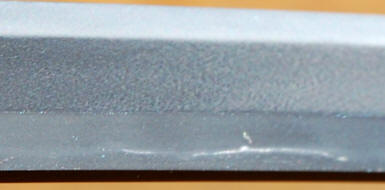
Unimportant tate ware in the shiinogiji

Two areas of staining


Gojimei: Hizen Kuni Munetsugu
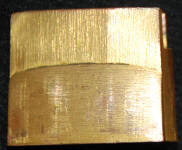
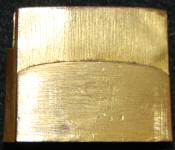
Nihju Gilt Habaki

Tiger Stripe Shirasaya
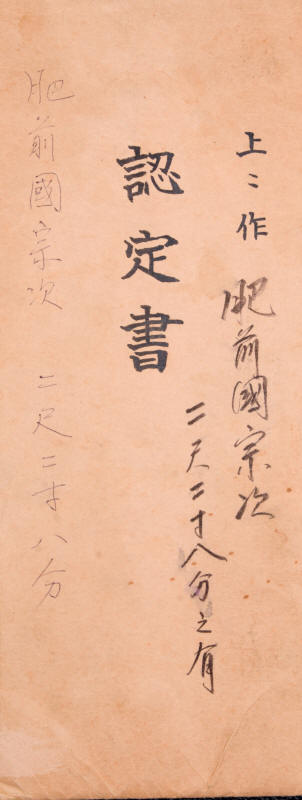
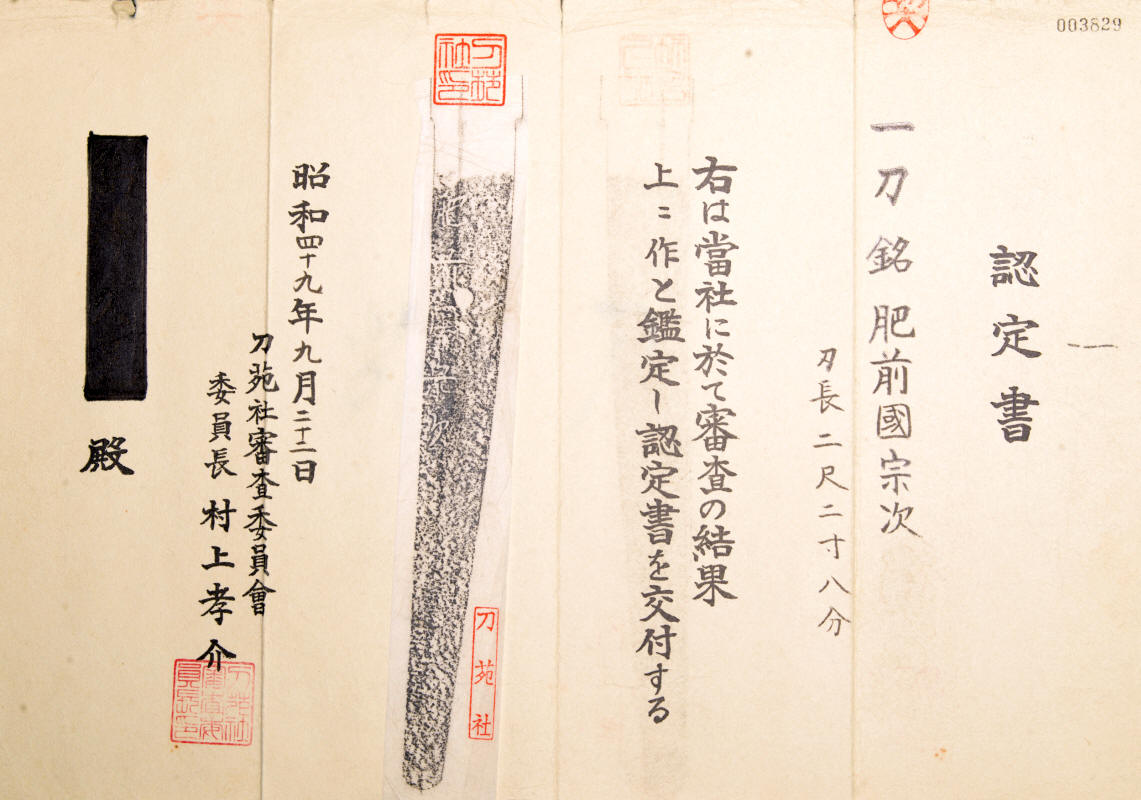
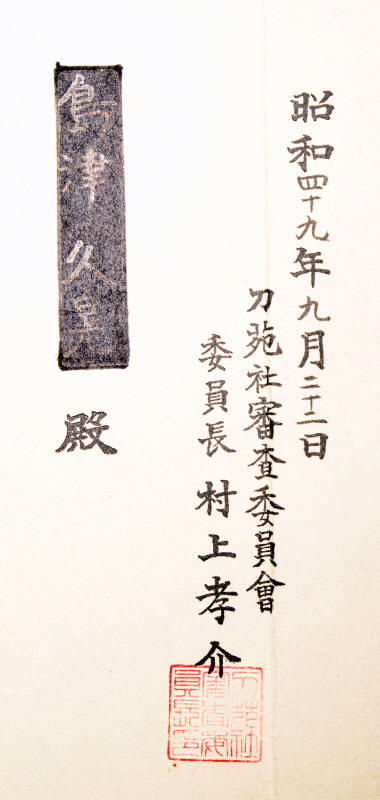
Toensha Certificate With a Jojosaku Rating Issued by President, Murakami Kosuke, Fixed To Reveal Previous Owner's Name

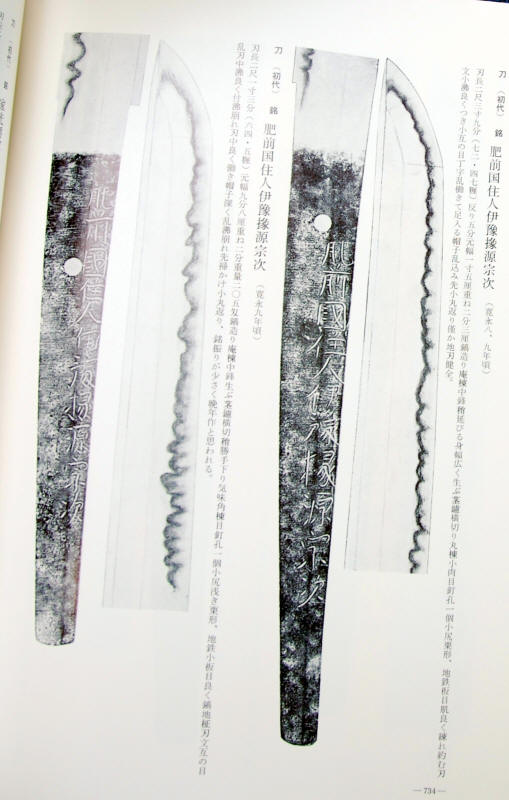
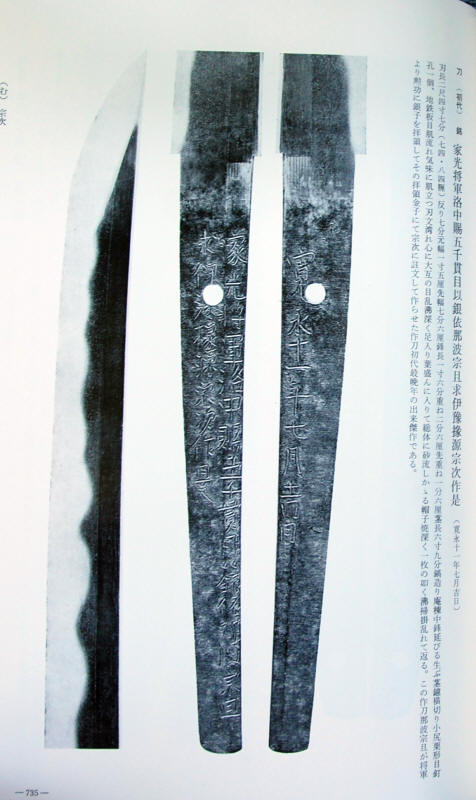
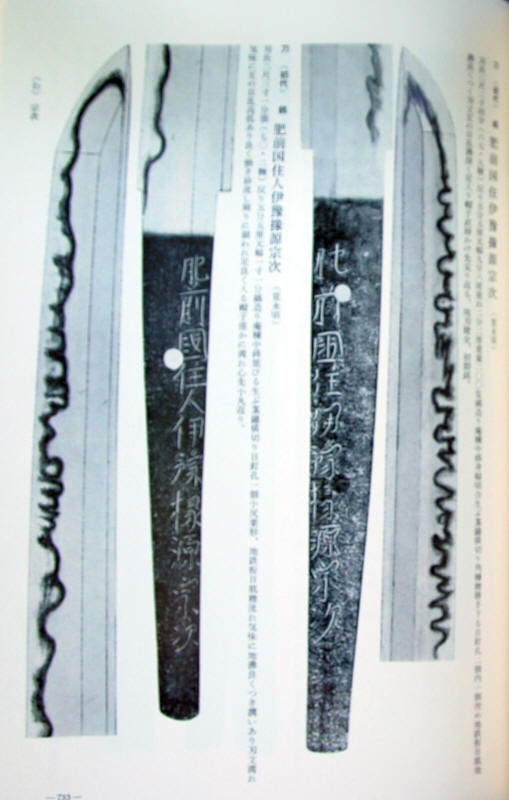
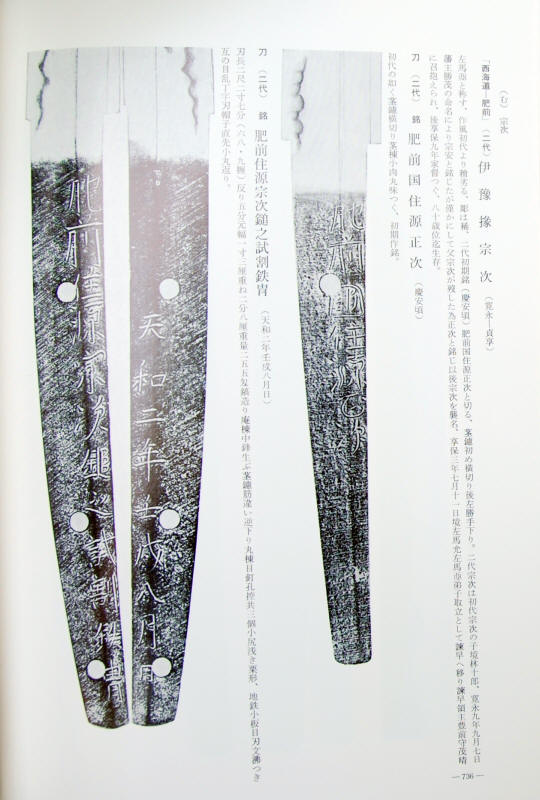
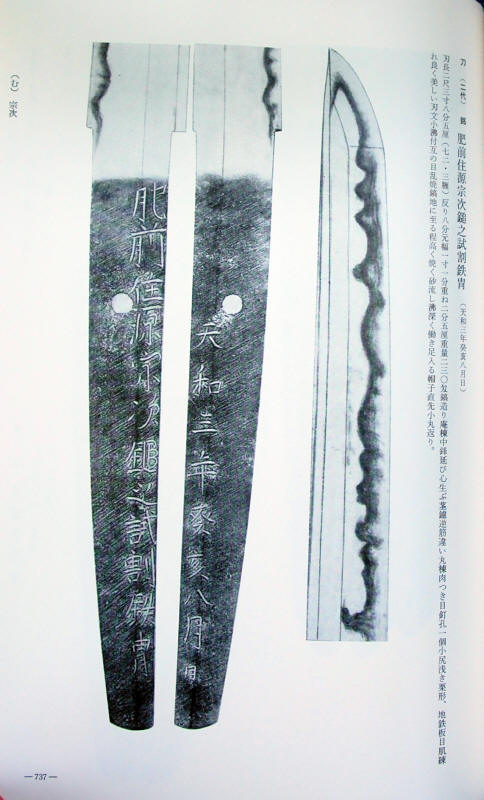
Shinto Taikan

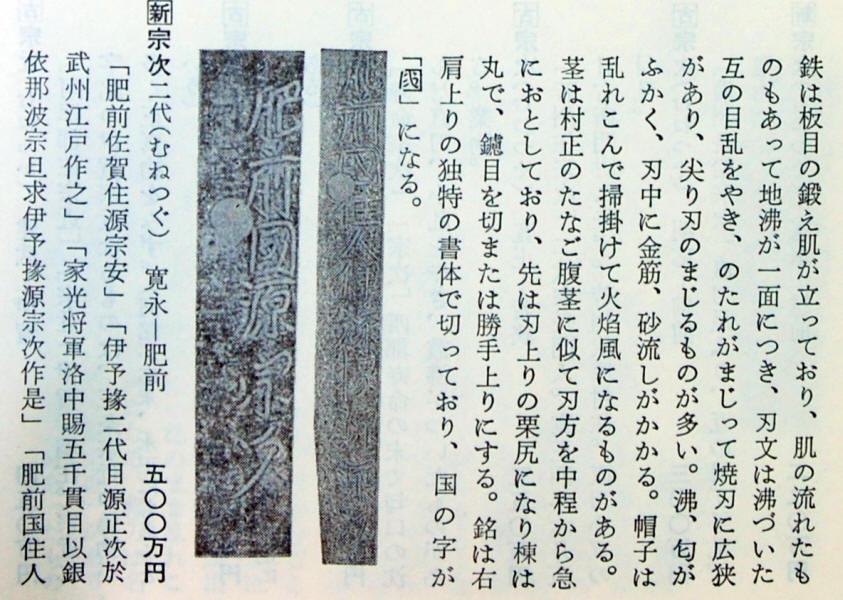
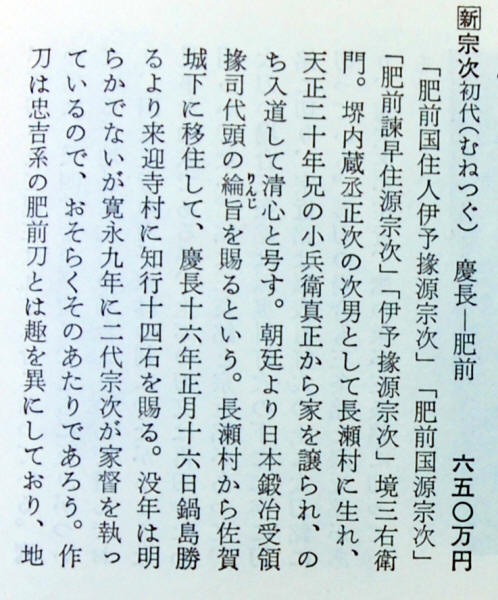
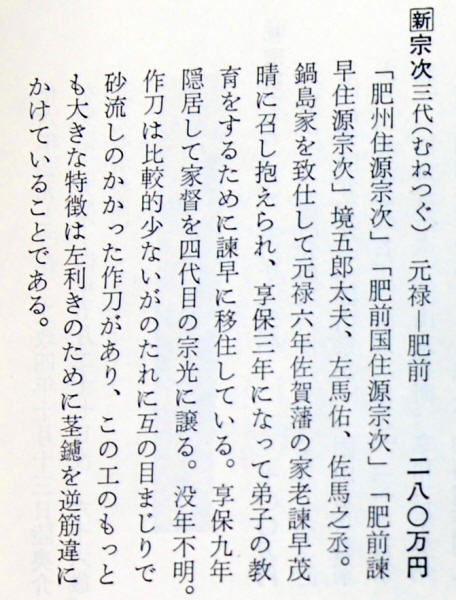
Toko Taikan

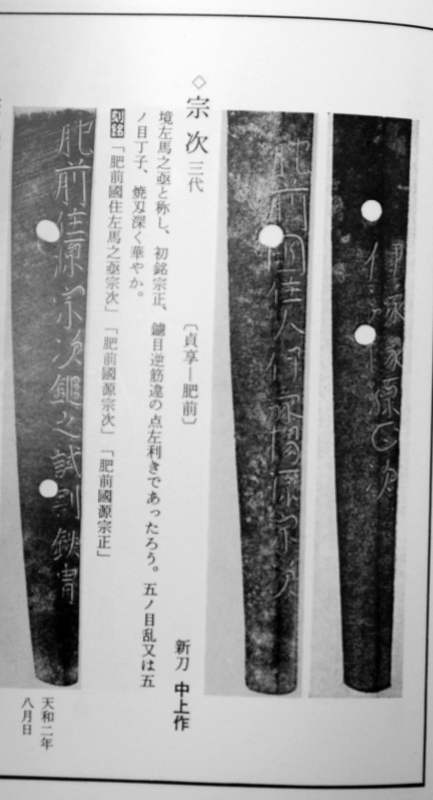
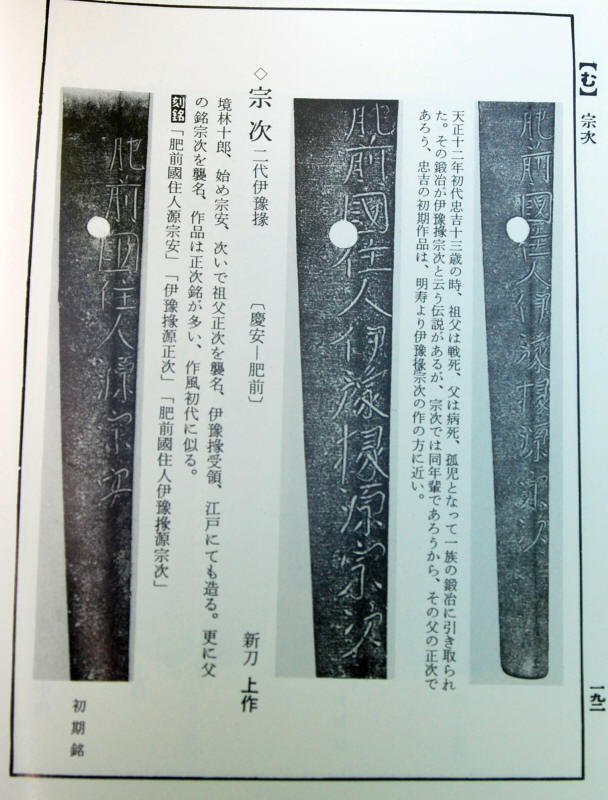
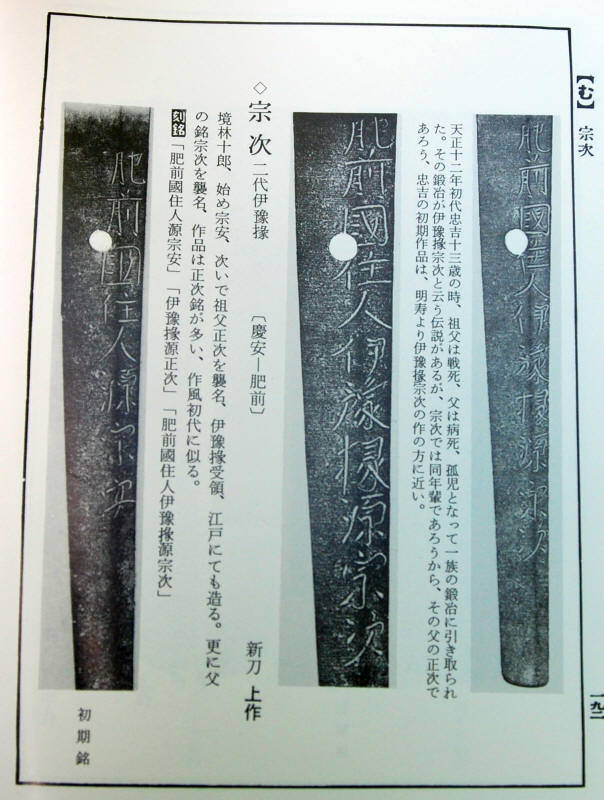
Nihon Toko Jiten - Shinto-Hen
2639